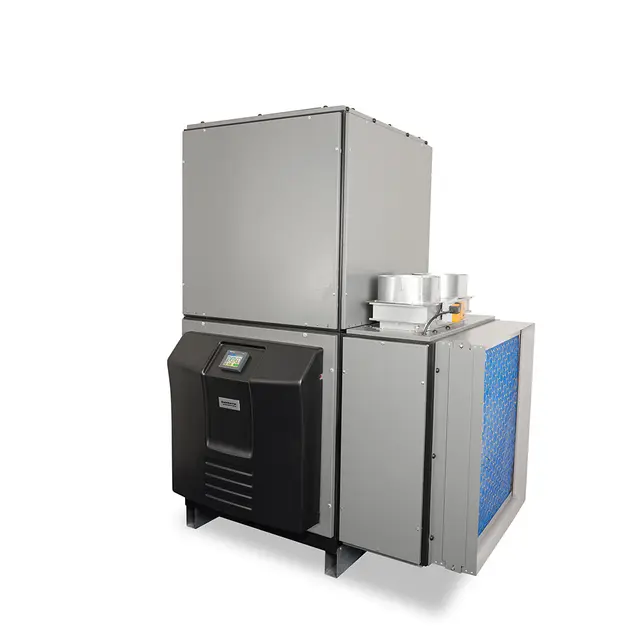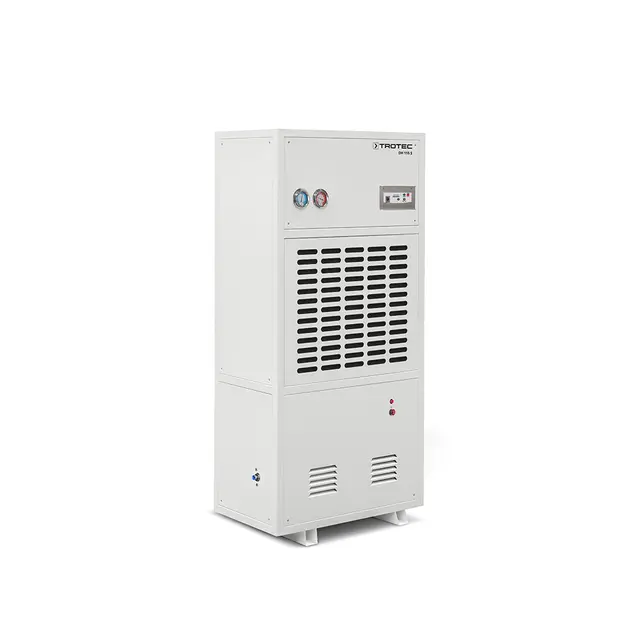The vital role of dehumidifiers in data security

- Home
- Insights
- Humidity control and drying insights
- The vital role of dehumidifiers in data security
Explore the challenges of humidity control in data centres, and the consequences of not protecting against high humidity in these critical environments.
Today’s leading data centres can have thousands of powerful servers running day and night to provide storage, backup, recovery and security for enormous amounts of information. The hardware that makes this possible is usually stored in one centralised location and can span rooms, entire buildings or multiple facilities.
In every case, the environment inside a data centre needs to remain at a constant to avoid the risk of overheating and condensation damage to sensitive equipment such as motherboards, hard drives and connecting sockets. Preventable outages and unplanned downtime mean extra cost, loss of business and lots of work to get equipment back up and running as quickly as possible.
In this article, we’ll cover the challenges of controlling humidity in data centres, the damaging effects of an unregulated environment and why one of Singapore’s largest operators have enlisted the help of 48 Calorex dehumidifiers to protect its new state-of-the-art facility.
Temperature and humidity are intrinsically linked
In data centres, cooling systems are essential for keeping equipment from overheating, but when an operator fails to control humidity levels, moisture will remain in the atmosphere. This causes condensation to form which increases the risk of equipment failure.
Because warm air is capable of holding more moisture than cold air, humidity levels will increase as a room heats up. The amount of moisture that the air can hold at its current temperature is measured in relative humidity (RH) as a percentage. So, as the temperature increases, moisture in the room and damp air from outside ventilation will build in the atmosphere. When the air is cooled and limited in the amount of moisture it can hold, the RH level will continue to rise until it reaches 100% or ‘dew point’. This is when the moisture in the atmosphere is released in the form of condensation.
Regulating humidity levels in one of Singapore’s largest data centre operators
The challenges of regulating conditions in data centres are intensified in locations with hot and humid climates. A traditional cooling system alone will quickly result in condensation and, when high temperatures are already an issue, using heating to dry it out is not an option.
That’s why one of Singapore's largest data centre operators, responsible for overseeing a network of world-class data security bases in the Asia Pacific, installed 48 Calorex DH 150 dehumidifiers to protect equipment and minimise outages at its new state-of the-art-facility.
Used in combination with a cooling system from a central plant, the dehumidifiers physically remove moisture from the fresh air supply. Despite running constantly, the dehumidifiers have the potential to create huge energy savings by putting less demand on cooling.
“Humidity control is essential to stop moisture in the fresh air supply from condensing into the room and potentially damaging equipment”
Marcus Bailey, Commercial Dehumidification Sales Manager
Why condensation dehumidifiers are a top contender
Efficiency is often a deciding factor for many data centres as, on average, cooling and power supplies count for up to 43% of energy costs. For large data centres, we usually recommend a high-capacity condense humidification solution.
Key benefits of condensation dehumidifiers
Remove moisture much more efficiently than a computer room air-conditioning (CRAC) unit
Achieve less than half the power consumption of other dehumidification technologies
Straightforward installation
Low capital cost
Minimal heat carry-over to the data centre suite
How a condensation dehumidifier works

The process
Damp air is drawn into the dehumidifier and across a refrigerated coil
The air is cooled below its dew point, condensing the water vapour
Latent heat energy is recovered and re-used
Cooled air passes across the condenser and reheated
The warm dry air is then returned to the room at the required humidity
To find out more about protecting your data facilities from the dangers of humidity and the options available, don’t hesitate to get in touch with our team.
Related products
Featured insights

Purpose-built solutions for industry leaders


Save your building from harmful moisture
Need help with choosing the right solution? Our team of over 100 climate control experts can assist.
You can also reach out or join the discussion on our Social Media. Check out our LinkedIn page.





